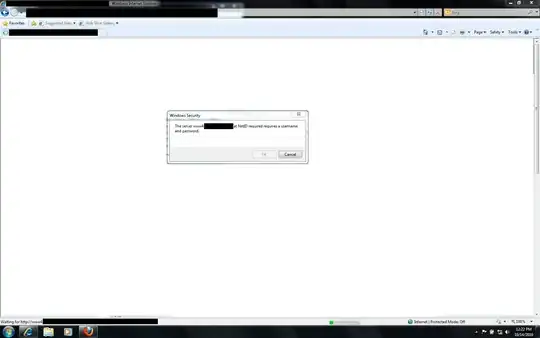UPDATE: I think the real question I need to ask here is: how does a technician debug UI problems with Internet Explorer, and not HTML rendering issues that have pretty good tools? I am aware of the SysInternals tools and others mentioned below, but maybe I am not harnessing their power properly. Someone else in the TechNet forum I mentioned had a similar issue. Again, I have lots of data, I am not sure how to properly interpret it.
ORIGINAL POST: So I tried the venerable Technet Forums to solve this isse. In short, the Windows Security dialog has no place to put credentials, rendering pretty much useless. This happens to apply for a whole bunch of our intranet websites, and only a select number of users with a few laptops have this problem. It ends up looking like this.

Things I have tried so far:
- Disabling local Group Policy (not domain connected)
- Disabling local Security Policy
- Resetting IE settings
- A few system restores
- Re-registering a bunch of IE DLL's and all other steps here
- Reinstalling IE8 (
dism /online /disable-feature /featurename:"internet-explorer-optional-x86, reboot,dism /online /enable-feature /featurename:"internet-explorer-optional-x86, and reboot) - And SFC scan, which found nothing
Still, nothing. Not only am I fed up, but I have begun to really work with APIExplorer and Procmon as mentioned in the Technet original because I want to know WHAT is happening, not just fix it. Any thoughts?